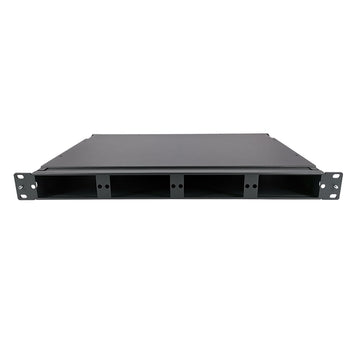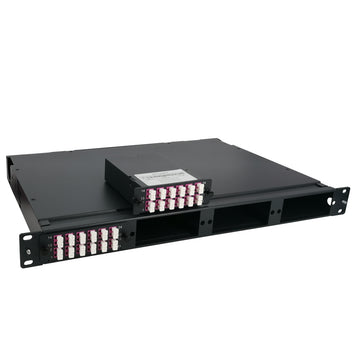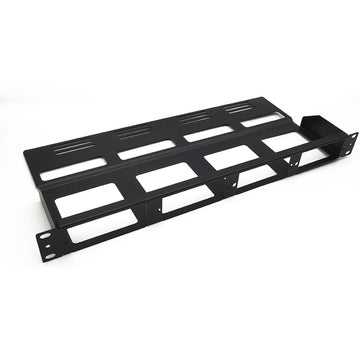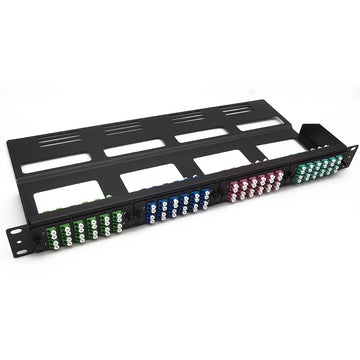FBT vs. PLC Fiber Optic Splitters – What’s The Difference?
FBT vs. PLC Fiber Optic Splitters – What’s The Difference?
The past few years have seen huge leaps in fiber-optic communications technology advancements that cater to the ever-accelerating demand for better and more efficient optical performance. Fiber optic splitters, which play an important role in optical networks by allowing two or more fibers to share a signal on a single fiber. Basically, there are two types of fiber splitter: fused biconical taper splitter (FBT) and planar lightwave circuit splitter (PLC).
Both gain some advantages and disadvantages respectively. This article aims to compare the two. Lightoptics as optical fiber splitter manufacturers thus provides some useful information about fiber splitter.
What Is PLC Fiber Optic Splitters?
A Planar Lightwave Circuit (PLC) splitter is a passive optical fiber splitter based on optical semiconductor technology. A PLC splitter's manufacturing process is similar to those of semiconductors. A typical PLC splitter consists of a PLC chip along with input and output arrays, the number of which depends on the split ratio.
PLC fiber optic splitters are used to evenly divide one or two optical signals into multiple optical signals.
Fiber optic plc splitters are passive optical devices that are widely used in Passive Optical Networks (PON) by connecting to the Main Distribution Frame (MDF). FTTH and FTTx Networks such as BPON, GPON, EPON, and xG EPON all utilize PLC Splitters in their design.
As demand for higher bandwidth continues to grow, telecommunications companies rely on Passive Optical Networks (PON) and reliable PLC fiber optic splitters to provide fiber optic links to an increasing number of users. PLC splitters allow a single PON network interface to be utilized by multiple users, maximizing a fiber network’s user capacity in increasing ROI.
| PLC Fiber Optic Splitters | |
| Advantages | Disadvantages |
|
|
What Is FBT Splitter?
FBT is the traditional technology in which two fibers are placed closely together, typically twisted around each other and fused together by applying heat. The fused fibers are protected by a glass substrate and then protected by a stainless steel tube. The quality of FBT fiber splitter has improved over time and they can be deployed in a cost-effective manner. FBT splitters are widely accepted and used in passive optical networks, especially for where the split configuration is no more than 1×4.
However, when larger split configurations such as 1×16 fiber splitter,1x32 fiber splitter and 1×64 fiber splitter are needed. FBT technology is limited to the number of splits that can be achieved with one coupling. Under such circumstance, multiple FBT splitters can be spliced together in concatenation to multiply the amount of splits available. This is also known as a tree splitter or coupler. When using this design, the package size and the insertion loss increases with the additional splitters and splices used.
| FBT Splitter | |
| Advantages | Disadvantages |
|
|
Differences Between FBT Splitter and PLC Splitter
In this part, we will take a look at the main differences between FBT splitter and PLC splitter from eight perspectives.
| Parameters | FBT Splitter | PLC Splitter |
| Fabrication Method | Two or more pieces of optical fibers are bound together and put on a fused-taper fiber device. The fibers are then drawn out according to the output branch and ratio with one fiber being singled out as the input. | Consists of one optical chip and several optical arrays depending on the output ratio. The optical arrays are coupled on both ends of the chip. |
| Operating Wavelength | 1310 nm and ISSO nm (standard), | 1260 nm-1650 nm (full wavelength) |
| 850 nm (custom) | ||
| Application | HFC (network of fiber and coaxial for CATV), All FTIH applications. | Same |
| Performance | Up to 1:8—reliable. For larger splits reliability can become an issue. | Good for all splits. High level of reliability and stability. |
| Input/Output | One or two inputs with an output maximum of 32 fibers. | One or two inputs with an output maximun of 64 fibers. |
| Input/Output Cable | Bare optical fiber, 0.9 mm, 2.0 mm, and 3.0 mm | Bare optical fiber, 0.9 mm, 2.0 mm, and 3.0 mm |
Conclusion
Over the past few years, splitter technology has made a huge step forward in the past few years by introducing PLC splitter. It has proven itself as a higher reliable type of device compared to the traditional FBT splitter. If high split counts, small package size , and low insertion loss are required, you are suggested to choose PLC splitter rather than FBT splitter.
You can choose according to your requirements. Lightoptics, as an optical fiber splitter manufacturer, offers FBT Splitters and PLC Fiber Optic Splitters. Including PLC splitters with split ratios of 1×2 to 64 or 2×2 to 64. Additionally, Lightoptics offers a variety of form factors and packages to make PLC splitters suitable for a variety of environments and application. If you have any questions or would like to know more about PLC fiber optic splitter, please contact us and we will be happy to assist you.












